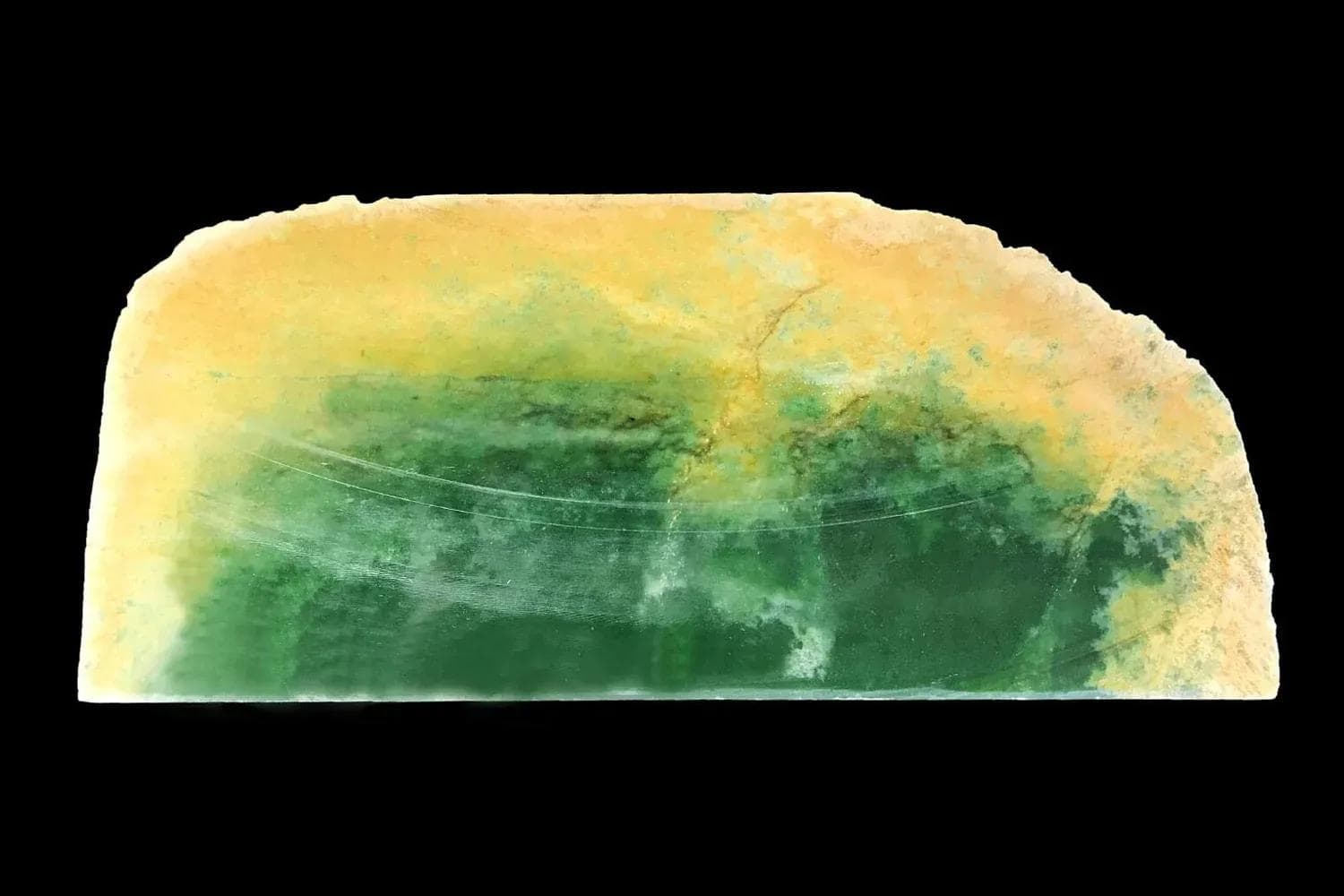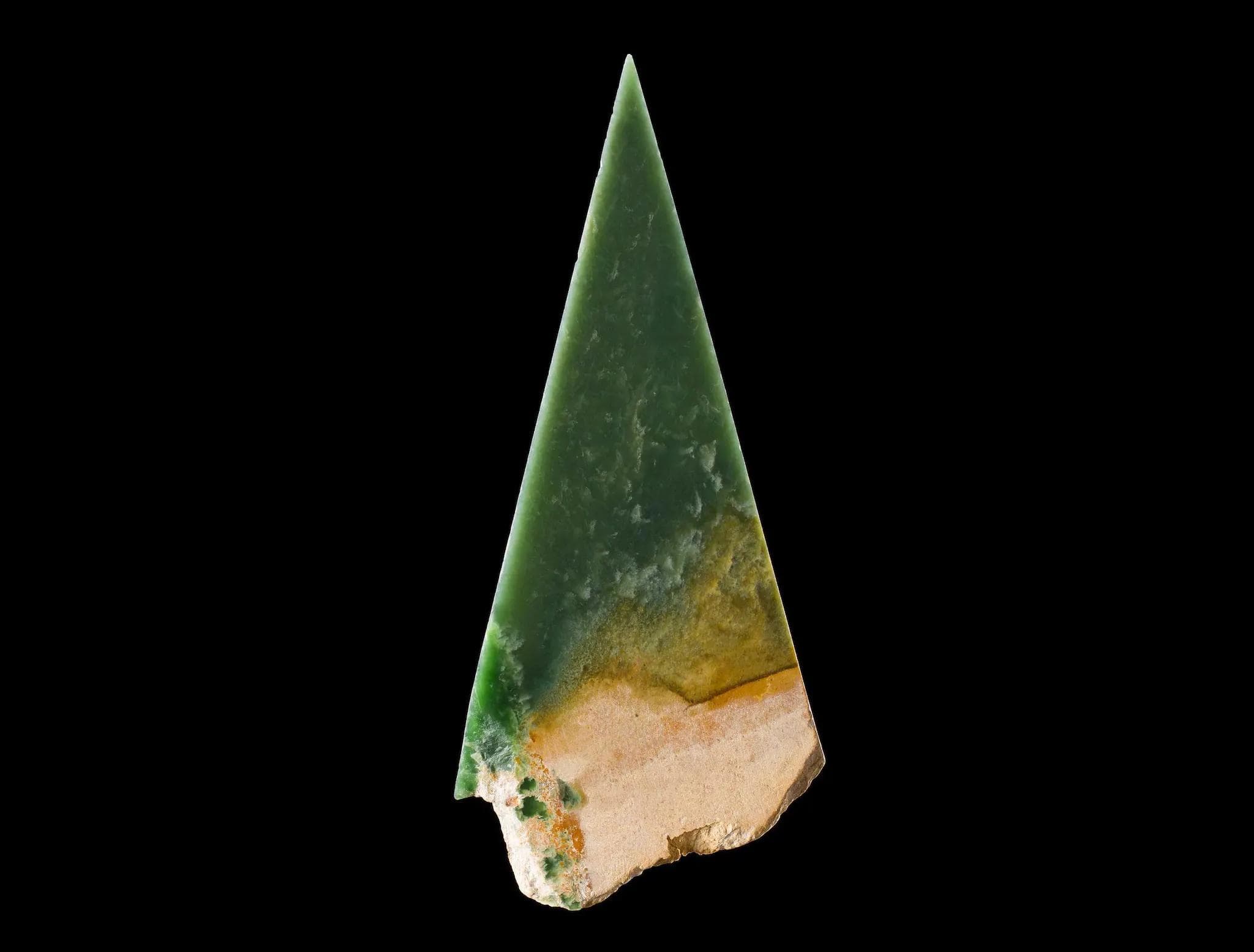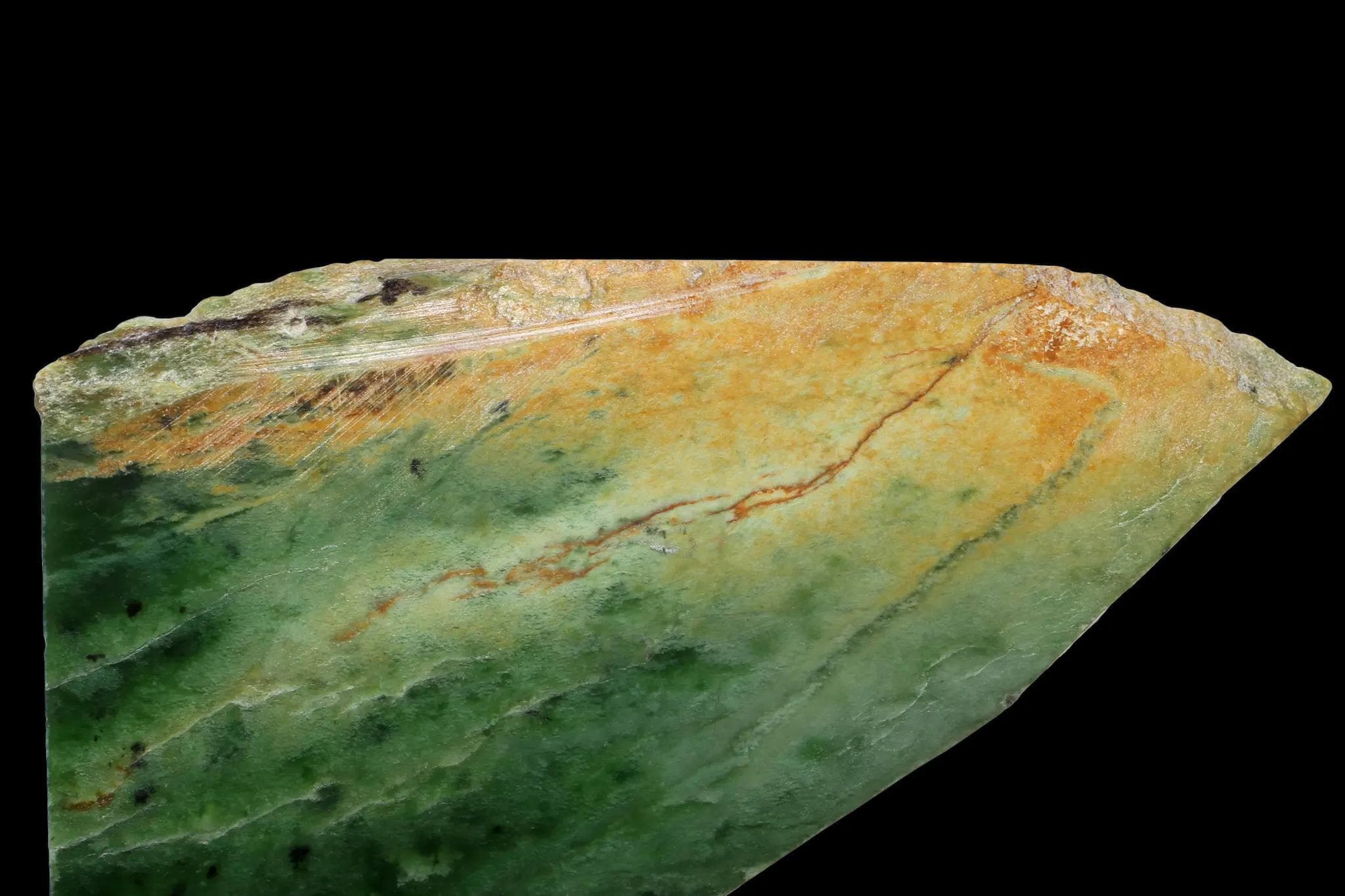
New Zealand is home to many types of pounamu, each with its own colour, translucence, and rarity. From the deep greens of kawakawa to the shimmering shades of inanga, every stone is unique. These varieties are part of what makes greenstone so diverse and valued.
New Zealand nephrite jade, also known as greenstone, or pounamu to Māori, is formed by intensive heat and pressure deep under the earth of the Southern Alps. This precious material has been forced to the earth’s surface by the movement of Pacific and Australian tectonic plates over thousands of years and freed from its origin rock with glacial movements, landslides, and erosion from streams and rivers.
New Zealand’s pounamu fields may be small, but they’re home to the finest nephrite specimens in the world.
Looking for a piece to buy? Discover our New Zealand Pounamu designs

Pounamu holds incredible significance among Māori and is considered a gift from the earth, making it a tapu (sacred) material for many. The deep spiritual connection Māori have with pounamu reflects how various stone types were named, with each pounamu type given an identity that corresponded to the world in which they lived. Stones were named after native birds, fish, plants, locations or legends. Inanga, the lightest of our pounamu, gets its name from our native whitebait fish, whereas, Kawakawa pounamu is one of the darkest and richest shades of green and gets its name from being like the colours of the kawakawa tree.
Learn more about the different types of pounamu below.

New Zealand Kahurangi jade (pictured above) is a rare and beautiful form of pounamu, highly treasured for its gem-like qualities and being a pure stone with little to no imperfections. The stone's light to apple green shades are intense and vibrant, and being highly translucent it easily radiates its colour without being held to the light. Kahurangi is also a Māori word meaning a precious, honourable and distinguished treasure or jewel.
Mainly found north of the Arahura River and the Marsden Region.



New Zealand inanga jade (pictured above) is a highly prized pounamu that takes its name from the juvenile native minnow (small freshwater fish), more commonly known as whitebait. Inanga pounamu has a distinctive milky grey-blue-white flesh and can be highly transparent in lighter stone shades, resembling the pale colour and transparency of young whitebait. The milky colours transcend to rich green inclusions, and the stone has a soft, porous rind.
Found in the Arahura River and the Kawhaka and Waimea Creeks. Browse our collection of Inanga pieces.

A valuable and highly sought-after type of pounamu, New Zealand Flower Jade is prized for its beautiful and distinctive golden-yellow-orange patterns unique to Aotearoa. It is also known as putiputi pounamu, with putiputi meaning "flower" in Māori.
Over thousands of years, Flower Jade undergoes a unique weathering process where the stone gets its beautiful colours after forming, rather than during formation like most other jades. As the stone sits in the river getting tumbled and smoothed, flowing water pushes minerals into it through tiny fractures, causing oxidation and unique yellow-gold colour to form – reflecting its name, flower jade. The golden patterns are referred to as the “flower” and are found in stones that range from light transparent inanga to the darkest of kawakawa.
Found in the Marsden region, just outside of Greymouth. Browse our collection of Flower Jade Corded Necklaces.




Mutton Fat jade or Yellow Jade as it is also known, is very rarely found in New Zealand. "Mutton fat" is used to describe the creamy white and yellow colours of stone. Pure white Mutton Fat jade from China is one of the most expensive varieties of nephrite jade in the world.
Found mainly in the Wainihinihi Creek and Arahura and Taramakau Rivers.
New Zealand is one of the few countries in the world that does not mine for its jade, the stone is instead fossicked in riverbeds and glacial valleys. In the late 1990s, the New Zealand government vested ownership and guardianship of all pounamu to the South Island tribe of Ngāi Tahu. As kaitiaki (guardians), Ngāi Tahu ensures any raw pounamu is sustainably and ethically sourced to make sure our taonga (treasure) is safeguarded for future generations. This includes not just caring for the stone but also protecting and advocating for the rivers it comes from, the artists that shape it and the communities that surround it. Under their leadership, the Ngāi Tahu Authentic Pounamu Licensing Scheme was borne and we were the first New Zealand retailer to be registered. Being licensed grants us the ability to purchase raw stone certified as genuine New Zealand pounamu directly from Ngāi Tahu to carve in our studios. We also work with independent artists from around New Zealand who carve from their home studios, and source their own pounamu.
We take care when listing our products for sale on our website. On each product page, in the product title and description, you will see the stone origin. If the stone is from New Zealand, it will say either; New Zealand Pounamu, New Zealand Greenstone, or New Zealand Jade. As we are jade specialists, we also carve beautiful pieces of jade from many different countries and clearly label the country of origin as; Canadian Jade, Indonesian Jade, Australian Jade, Chinese Jade etc.